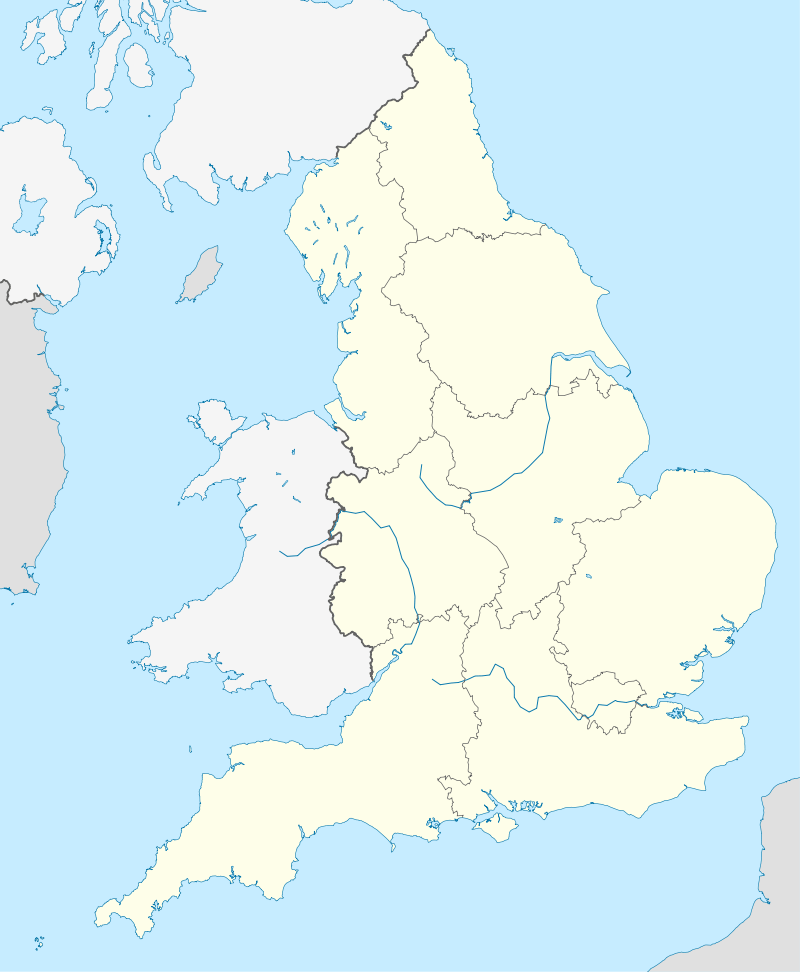English rugby union system
Rugby union in England consists of 101 leagues, which includes professional leagues at the highest level, down to amateur regional leagues. Promotion and relegation is in place throughout the system.
History
Historically, there were no leagues allowed as these were seen as a sign of professionalism. In the 1970s the RFU allowed the creation of regional merit leagues with the most significant ones being the North, Midlands, South West and London merit leagues. In 1984 the RFU approved the creation of two national merit tables where clubs had to play a minimum of eight games against the clubs in their division. 1985 saw the creation of a third national merit league. In 1987 this was formed into a true national league system.
Most recent restructure
The format and competitiveness of the leagues has changed greatly since the leagues were first formed[1] and the latest widespread restructuring of the leagues was announced in November 2008, for implementation from the 2009–10 season. Under this new structure, the top league remains the 12-team Aviva Premiership. The second tier league has been rebranded and restructured; as the RFU Championship which has replaced the old National Division One. This league also has 12 teams, and like the Premiership, is professional. Beneath the two professional leagues, the National Leagues have been restructured to include a new 16 team National League 1, 16 team National League 2 South and 16 team National League 2 North. The four top regional leagues are now part of National League 3 at level five.
Professional rugby
The top two tiers of English rugby are professional with 24 teams (2014/15 season):
Level 1: Aviva Premiership
The Aviva Premiership is the top level league in England, containing the best 12 professional clubs. The premiership still includes strict ground criteria and a salary cap that must be met by all participants. Promotion and relegation remains between the top two divisions with the bottom side being relegated at the end of the season, providing the promoted club meets the ground criteria. The promoted club will no longer be the top team in the RFU Championship after the 22 match first phase; the champions being decided by a play-off system which is hoped to bring to an end a select number of clubs bouncing between the leagues. (For example, each season between 2005–06 and 2008–09 saw the club relegated to National Division One earning promotion to the Premiership the following season, and also either the promotion or relegation of Leeds Carnegie.) Debate still continues over the question of promotion and relegation, but with the strict criteria and now a fully professional Championship providing the replacement financial fears are reduced.
Level 2: RFU Championship
The new RFU Championship was formed in 2009–10 to provide a second tier of professional competition. The former National Division One was decreased from 16 clubs to 12 to accommodate the new fixture structure. For the first three seasons this included:
- a first phase of 22 regular season games
- end of season play-offs to decide the promotion and relegation places
- participation in a new British and Irish Cup with Irish, Scottish and Welsh clubs
- a minimum of 32 games per season
From season 2012–13 the end of season play–offs are discontinued, with the top four teams now playing against each other in two semi–finals and a final; which decides the champions, and thus the team eligible for promotion providing certain ground criteria are met. The last team at the end of the first phase is relegated to, and replaced by, the champions of the third tier National Division One.
Levels 3-5: National Leagues
The new National League structure includes:
Level 3: National League 1
The former National Division Two was renamed and increased from 14 to 16 teams. This resulted in a 30-game season on a home and away basis. The champions are promoted to the level 2 RFU Championship, and the three bottom sides are relegated to the level 4 National League 2 North or National League 2 South depending on geographical location.
Level 4: National League 2 South and National League 2 North
The previous National Division Three leagues became National League 2, keeping the same structure as previous except for being increased to 16 teams each. The two league champions are promoted, with the two runners-up meeting in a promotion play-off to decide the third promoted team. The bottom three in each league are relegated to their respective regional division. A new element is that the champions will meet in a National Final.
Level 5: National League 3
The former top regional leagues became the lowest level of the national league structure, increasing in size from 12 to 14 teams. The leagues are:
- National League 3 North
- National League 3 Midlands
- National League 3 South East
- National League 3 South West
The four champions are promoted to either the National League 2 North or National League 2 South, the four runners up enter play-offs to decide the other two promoted sides. The four champions clubs also meet in a knock-out national finals competition.
Regional leagues
With the restructuring, levels 6-12 became the new regional system. There are now 8 regional Division 1 leagues, which are connected to the national leagues by promotion and relegation.
The system
The table below shows the current structure of the system. For each division, its official name, sponsorship name (which differs from its historic name) and number of clubs is given. At levels 1-3, each division promotes to the national division(s) that lie directly above it and relegates to the national division(s) that lie directly below it. Below that level, clubs relegate to the nearest local league.
See also
References
- ↑ Tony Williams and Bill Mitchell, ed. (1990). Official Rugby Union Club Directory 1990-91. Windsor: Burlington Publishing Co Ltd.
External links
- http://www.scrum.com/scrum/rugby/story/86076.html (Explains new structure)
